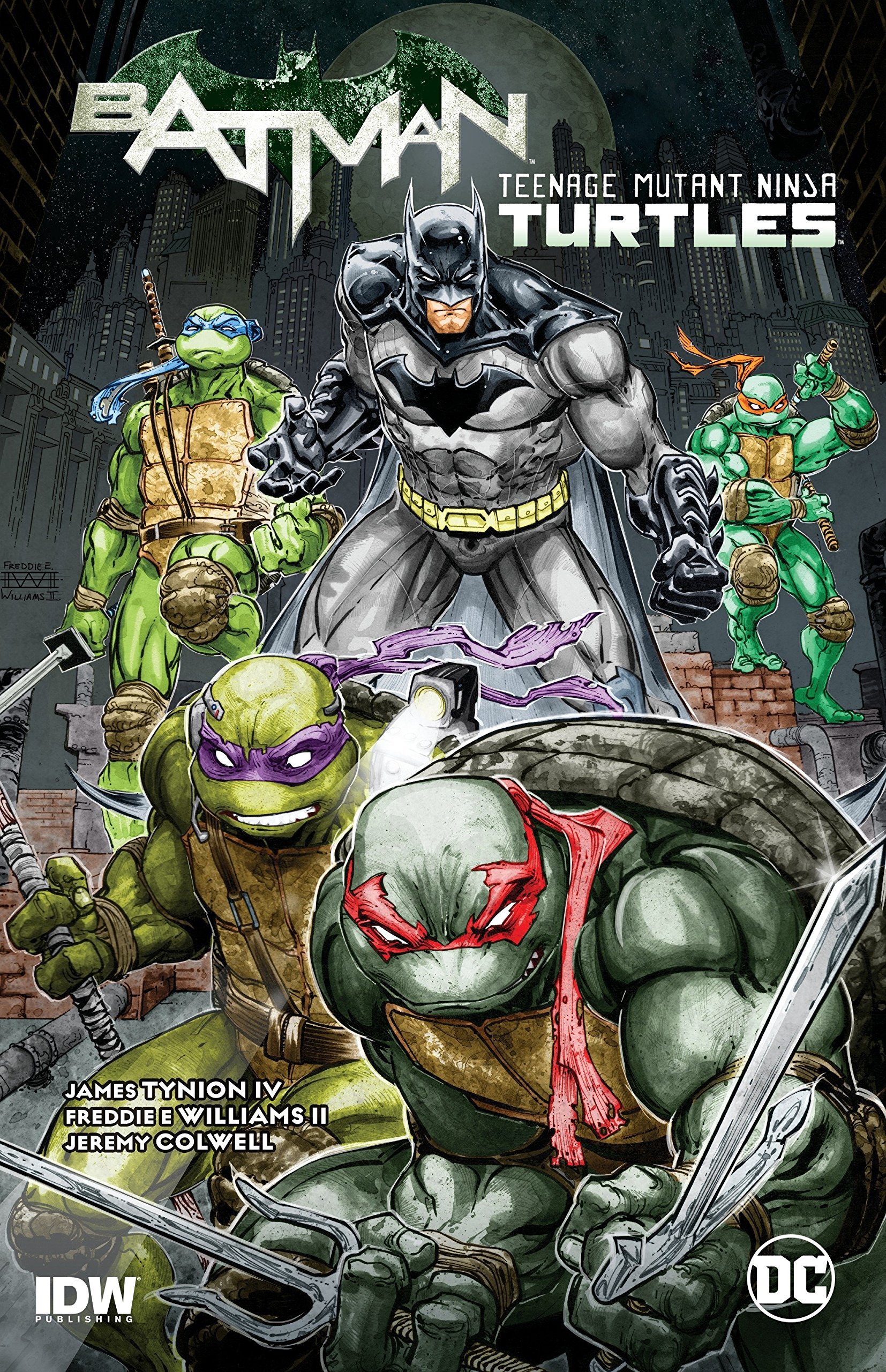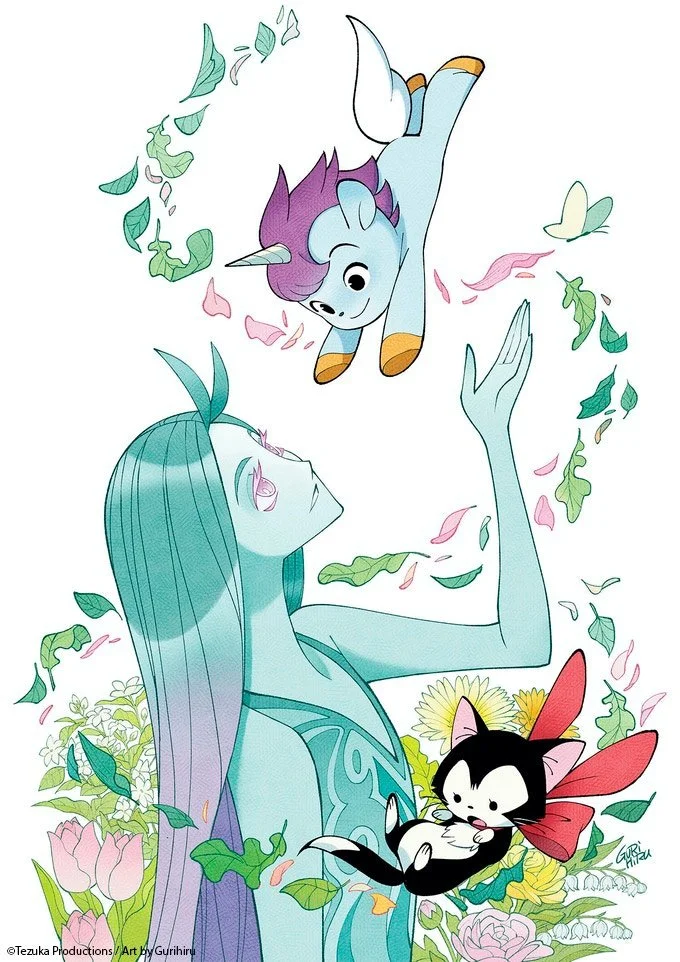Black Widow Underestimated: 'It’s Not the Length of Life that Matters…'
By Paul Thomas — While working toward a comprehensive examination of solo Black Widow series, between my previous post and this one, I read and wrote about Kelly Sue DeConnick and Gene Ha’s outstanding Wonder Woman Historia: The Amazons (Book Two). At the same time, Kelly Thompson and collaborators’ notable run on Black Widow (v.8) ended at only 15 issues in April, spoiling my plan (hopes?) for a longer commitment from Marvel. In short, it’s been an eventful month.
Having another disappointing brief solo run for Black Widow, though, gives me a more distinct end point for the series, but I am most impacted by the strong feminist perspective running through DeConnick’s work. In Historia Book Two, two moments stand out and help frame this and future posts about Black Widow: Queen Hera angrily argues: “There will be no justice for women. Not now. Not a hundred years from now. Not a thousand!” and Hippolyta shouts, “There is nowhere in this world of men for a woman to be free.”
Now, 2010 through 2011 offers three series for Black Widow — eight-issue Vol. 4 with two creative teams (writer Marjorie Liu and artist Daniel Acuna, issues 1-5; and writer Duane Swierczynski and artist Manuel Garcia, issue 6-8); four-issue Widowmaker (writer Jim McCann and artist David Lopez), and the four-issue Black Widow: Deadly Origin (writer Paul Cornell, and artists Tom Ranney and John Paul Leon).
Covers from Issues 1 and 3 highlight the visual power of the new series but also frame Black Widow in the superhero world, linked to Iron Man, Wolverine, and Elektra. (Covers by Daniel Acuna)
These solo runs all have several strengths, although they mostly suffer from a lack of imagination, returning to many of the patterns I have already detailed in earlier posts (here, here, and here). What seems important to address are the central role of Black Widow’s body to the narratives and artwork, the recurring significance of sexuality and sexual innuendo, and the tensions created by genre (notably among romance genre, spy/thriller genre, and superhero genre).
“But I Just Wanted to Be Free”
Black Widow Vol. 4 opens in issue 1 with a fight between Black Widow and Black Rose — who is a very large man with a disfigured face, in all ways a contrast to Natasha.
There is the usual tension between them, jokes about “touch,” but as Natasha leaves the encounter, we witness a brutal attack on her — a hasty and painful surgery performed on the sidewalk leaving her bleeding.
Natasha’s secret has been ripped from inside her, another example of how narratives around Black Widow are strongly linked to her body as central to her character. (Issue 1, Liu, writer, and Daniel Acuna, artist)
Incapacitated and exposed, Natasha lies next in a life-saving surgery attempt surrounded by James (Bucky Barnes), Tony Stark, and Logan. Throughout solo Black Widow series, the stories and arcs weave together romance, spy/thriller, and superhero genres, emphasizing, I think, Natasha as a human (and woman) among superheroes (and men).
Experiencing multiple invasions (penetrations) of her body, Natasha must endure—and remain immobile—intense physical pain. That capacity speaks beyond her character and to the larger endurance of women against the hostility of the world and even of their biology (such as childbirth).
A flashback, for example, shows Natasha confronting a man, using her high heel as a provocative weapon, about his infidelity and physical abuse of his wife.
(Issue 1, Liu, writer, and Daniel Acuna, artist)
Liu and Acuma’s Black Widow arc weaves the Natasha/Barnes love story through a primary plotline of examining whether or not Natasha has betrayed the very superheroes whose trust she has worked to gain.
Throughout this arc, Natasha proves again and again she can rise above extreme physical pain while everyone around her is forced to re-evaluate whether or not she can be trusted. And that trust is compromised by a pattern of relationships among Black Widow and an assortment of superheroes—Captain America, Hawkeye, Wolverine, and Iron Man.
“Tell me, gentlemen … is there even one man among you who the Black Widow hasn’t seduced?” (Issue 2, Liu, writer, and Acuna, artist)
Natasha is potentially a fickle woman—at least among the men in the story—and many panels match the titillating images by Gene Colan noted in an earlier post.
Natasha/Black Widow consistently is portrayed with blood, bare skin, and weapons. (Issue 2, Liu, writer, and Daniel Acuna, artist)
Few examples of the tensions among gender, romance/sexuality, and the past are as powerful as reuniting Black Widow with Elektra, at the end of issue 2 and the focus of issue 3 (see the cover above).
As they prepare to fight, a Little Red Riding Hood reference fits perfectly into the color motifs as well as the arc’s themes around the dangers women face simply for being women. But their battle leads to a sort of truce of shared realities.
“And there are stories about wolves and girls”; however, Black Widow and Elektra recognize what drives them—“My life has been stolen from me,” states Elektra. (Issue 3, Liu, writer, and Daniel Acuna, artist)
By issue 4, Natasha’s quest for freedom has become increasingly complicated beyond the main storyline around whether or not Black Widow has been deceiving everyone close to her. Now, there is the weight of past that includes the reference to her baby.
Black Widow next confronts Lady Bullseye, when Natasha taunts Lady Bullseye rendered paralyzed: “Killing people is easy. Making them suffer is an art.” This extremely tense scene is then followed by a slapstick sexual moment when James drags her into the train bathroom.
In Slovakia, Natasha reunites with Black Rose, surrounded by family with a new baby.
These contrasting scenes—again distinguished by genre shifts among romance, thriller, and superhero genres—tumble to yet another reductive representation of Natasha, nude, bound, and adjacent to pieces of meat.
Can readers see these scenes as an acknowledgement that women (and Natasha/Black Widow) are too often reduced to and underestimated as mere pieces of meat? (Issue 4, Liu, writer, and Daniel Acuna, artist)
At the end of this Liu/Acuna arc, Natasha is exposed, stripped, and her physical torture continues, bound in a freezing meat locker. Called a “whore” and struck by her captor, Natasha is ironically freed—at least in this moment to inflict her revenge. That revenge includes Natasha revealing her long game, and that she has not double-crossed the Avengers, and leaving her captor stripped naked in the meat locker.
A bloody battle where Black Widow defeats Imus serves as the climax of this arc, but the story ends with Natasha musing about Tolstoy (and some uncomfortably sexual puns): “Tolstoy will live forever. …But that’s not enough. It’s not the length of a life that matters…just the depth of it.”
Natasha is unlikely any closer to being free, but she is aware of the importance of love and life.
Brief as a Woman’s Love?
Before moving to v.5 in the next post, I want to cover briefly the last arc of v.4 (only 3 issues) as well as its sequel, Widowmaker, and Deadly Origin.
One problem that persists with Marvel’s treatment of Black Widow is brevity, series cut very short and 3- or 4-issue mini-series. That brevity, I think, contributes to the lack of development of the character, the failure to really invest in anything other than recurring storylines that underestimate and hypersexualize Natasha.
The Swierczynski/Garcia conclusion to v.4 is often compelling—its focus on very thinly veiled examinations of political sex scandals (JFK) and the blurring of thriller and superhero genres—but throughout, the artwork creates a continual lurid obsession with Natasha’s cleavage (reminding me of Yelena’s mid-drift) and the dialogue is plagued with sexual innuendo, often jumbling the tone of the narrative.
Along with hypersexualizing Natasha in the images, the dialogue returns often to sexual innuendos—and sexual tension (Swierczynski/Garcia)
Phil Noto’s covers for issues 3 and 4 give a taste of his work to come in v.5
Couched in another “former lovers” narrative (the series ends with “This is why you never date a spy”), Widowmaker proves to be a fairly traditional superhero miniseries, and has the feel and look of previous miniseries including Black Widow and the pattern of the character being paired with other higher profile characters such as Daredevil.
Black Widow: Deadly Origin, another 4-shot mini-series, by Cornell, writer, and Ranney and Leon, pencillers, offers little, I think, in terms of moving beyond the strengths and weaknesses found in other solo Black Widow series, except the artwork by Leon (flashback) is exceptional.
Some of the best aspects of Marvel’s Black Widow series are artists who have worked on the series
The mixing of artists/styles and time throughout Deadly Origins, in some ways, captures the patterns I noted at the opening—specifically the blurring of genres. And there are the old standards, cat fighting and the superhero body/uniform.
A widow’s kiss as theater? (Rainey, Hanna, and Milla, artists)
Deadly Origins also works in past and present Black Widow and Daredevil narratives as part of an impressive, but overpacked, overview of Black Widow (the styles and flashbacks allow readers to view the many versions of Black Widow).
Probably unintentional, but Deadly Origin represents well that ultimately Marvel seems not to know what to do with Natasha/Black Widow.
With v.5, however, many of the promises so far are going to be fulfilled—an incredible creative team (Nathan Edmondson, writer, and Phil Noto, artist) and the longest run for a Black Widow series, 20 issues.
Read our parallel look at the history of Daredevil, Man Without Fear…By The Year!
Read more feature writing about comics!
P. L. Thomas, Professor of Education (Furman University), taught high school English for 18 years in South Carolina before moving to teacher education and teaching first-year writing. He is author of How to End the Reading War and Serve the Literacy Needs of All Students: A Primer for Parents, Policy Makers, and People Who Care (IAP). Follow him at http://radicalscholarship.wordpress.com/ and @plthomasEdD.

















